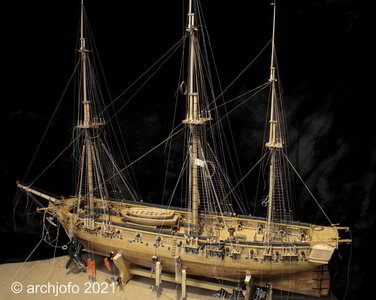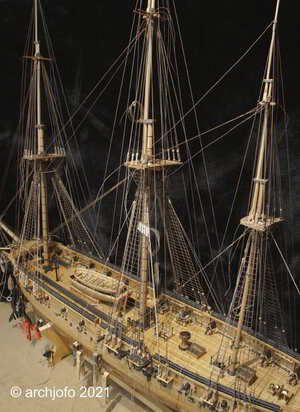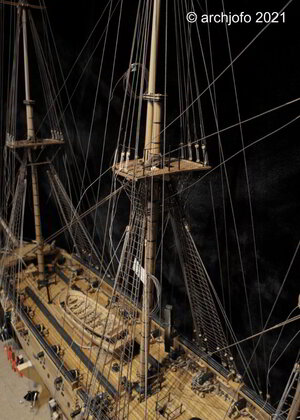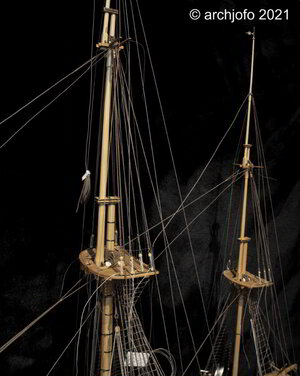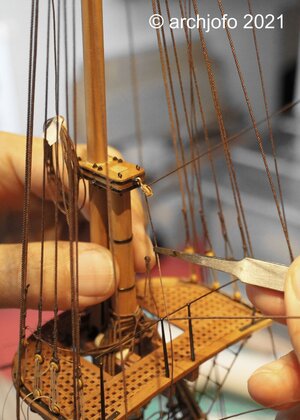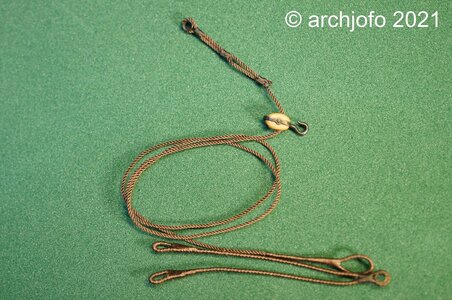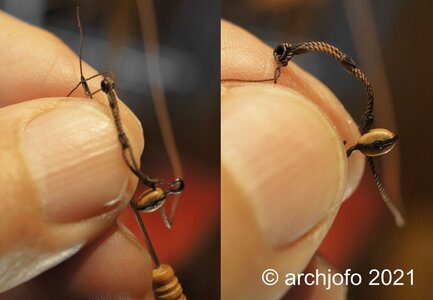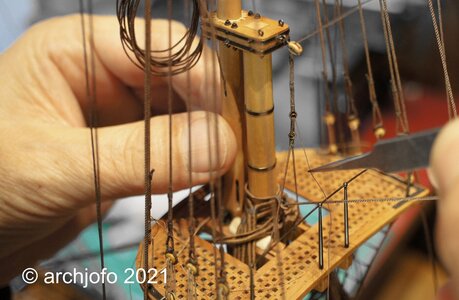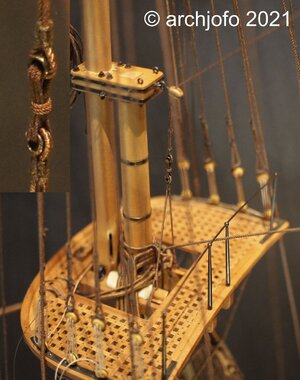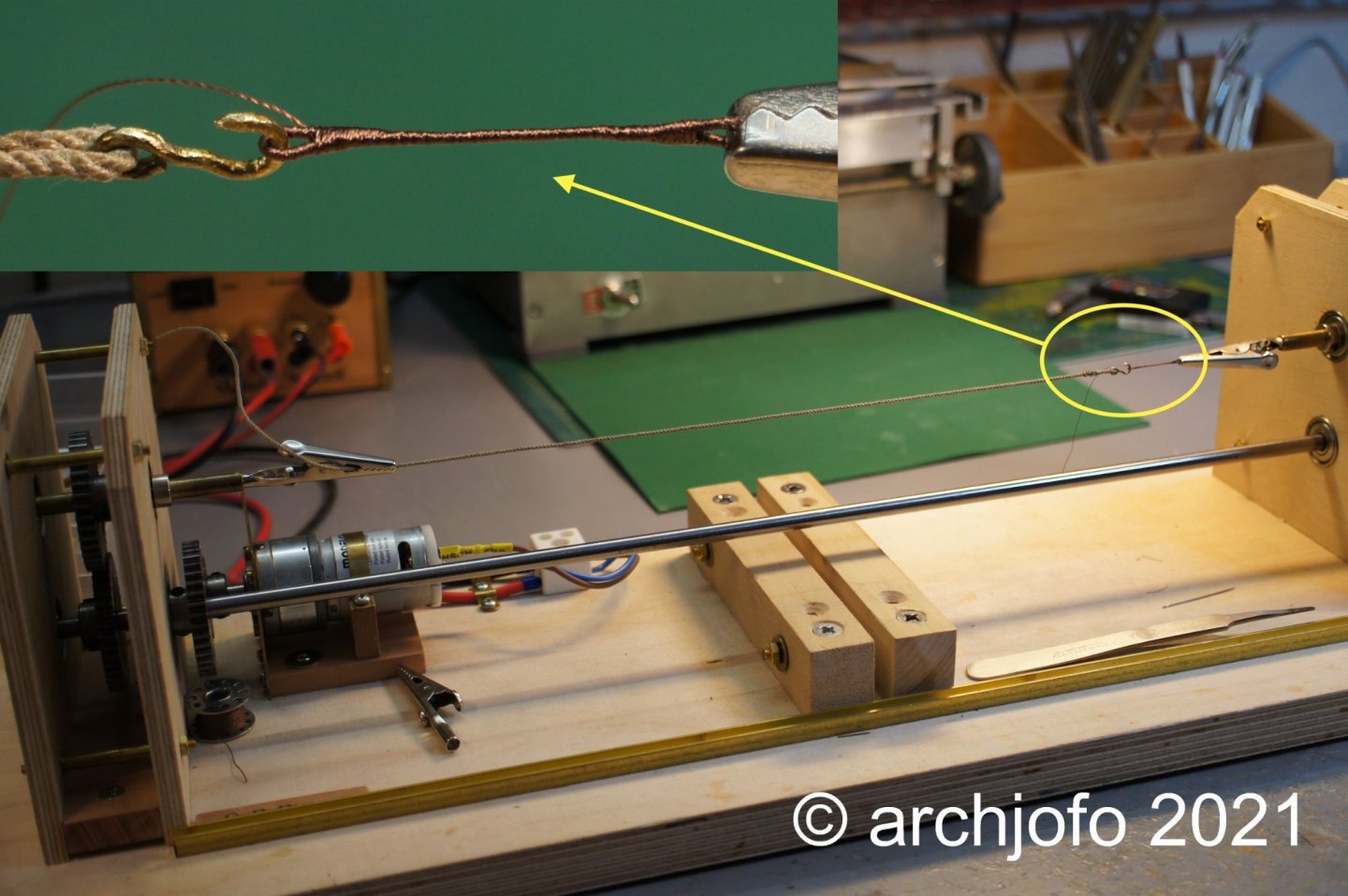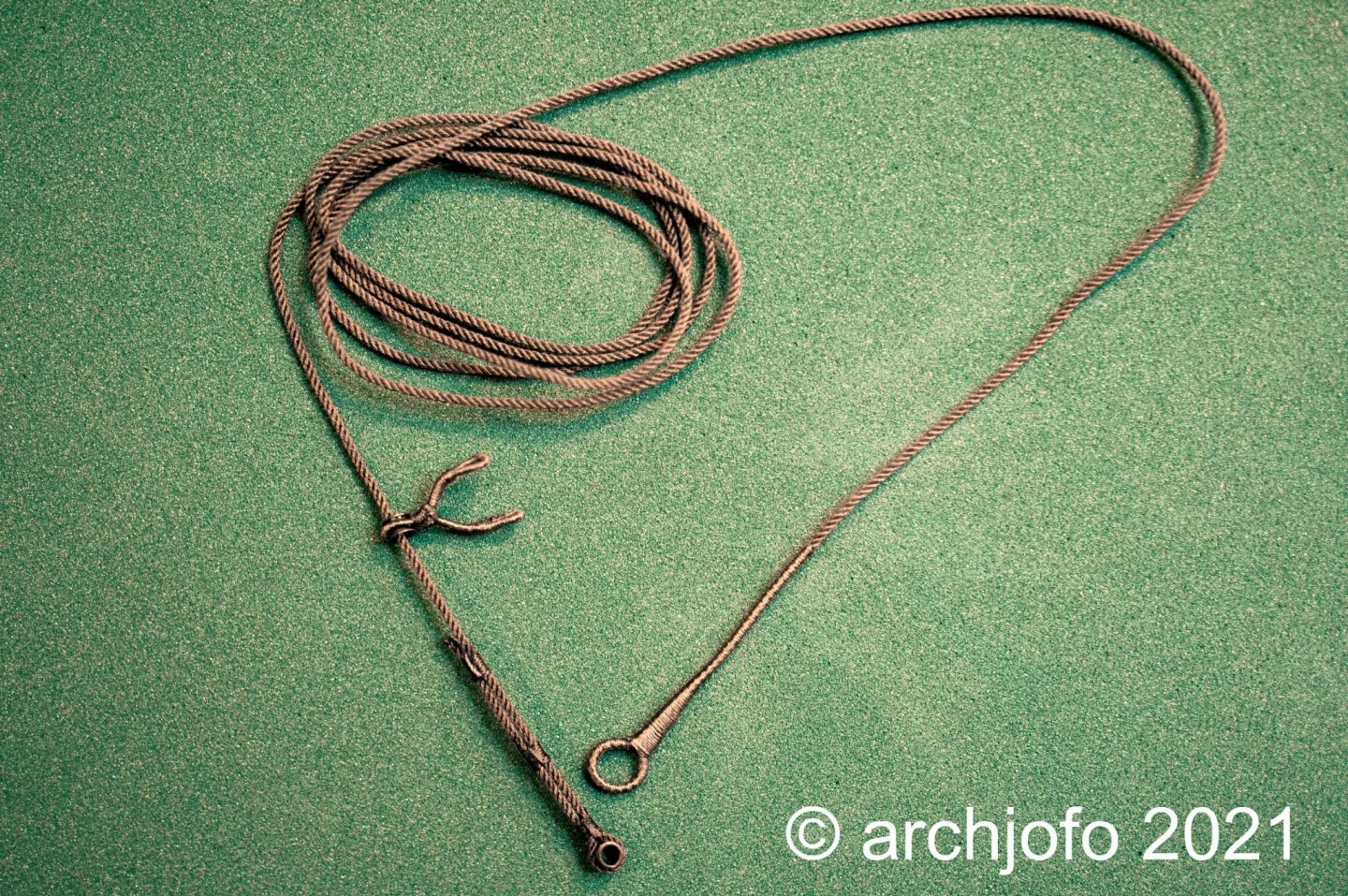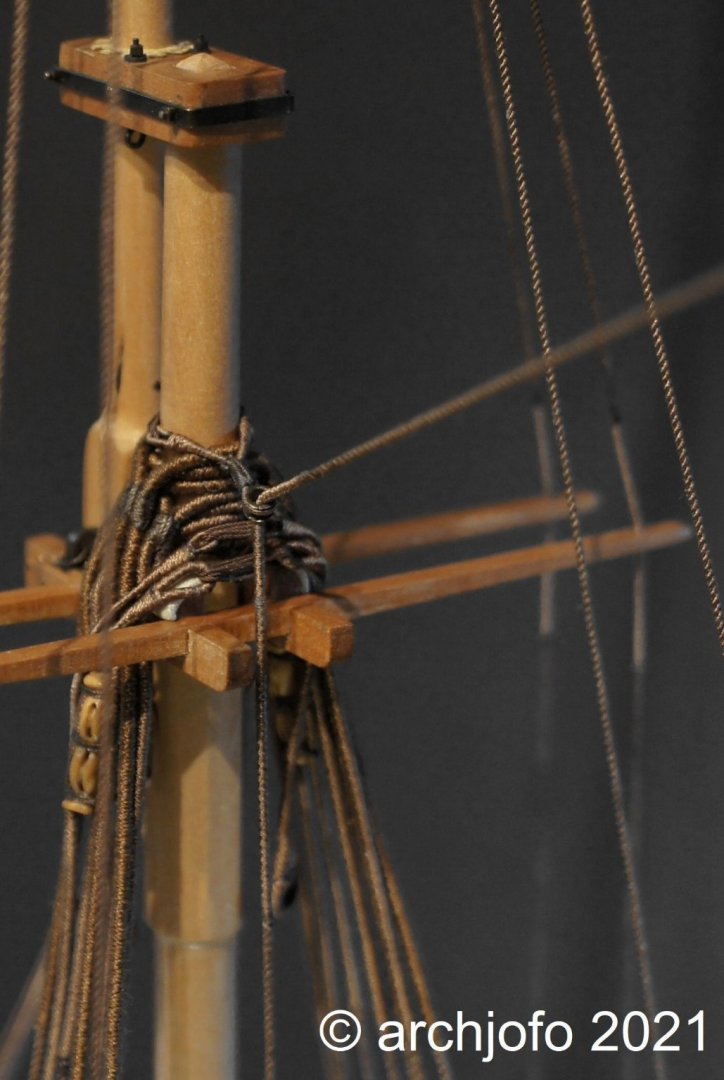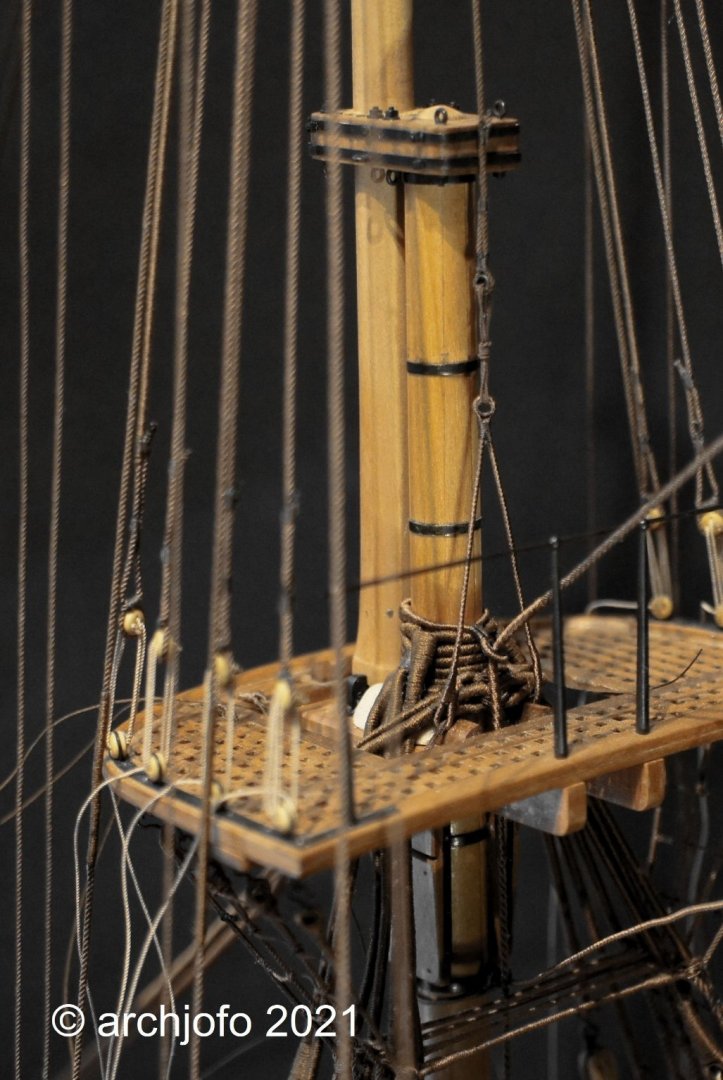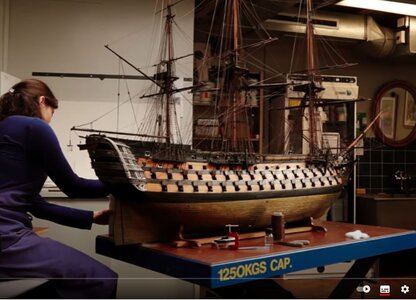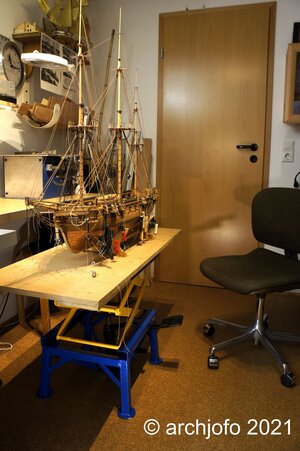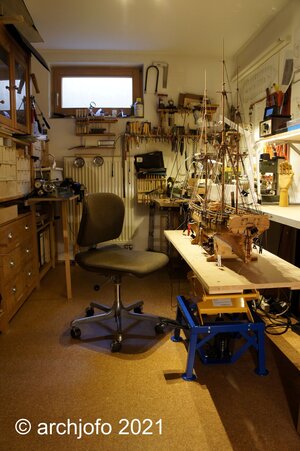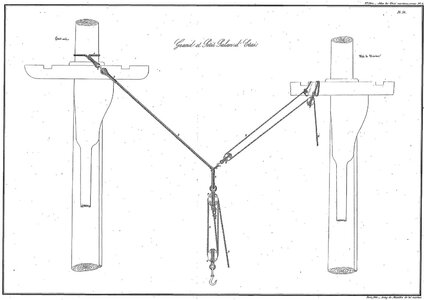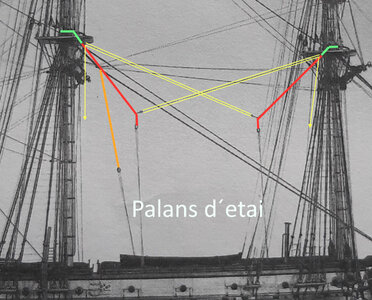Garnet tackle - Palan d'etai
The garnet tackle were generally used for loading goods, cannons and for lowering and hoisting boats.
With regard to the execution of the stage tack, there are differences between the graphic representation of J. Boudriot in the monograph and the original model in the Paris Museum compared to the model of La Créole.
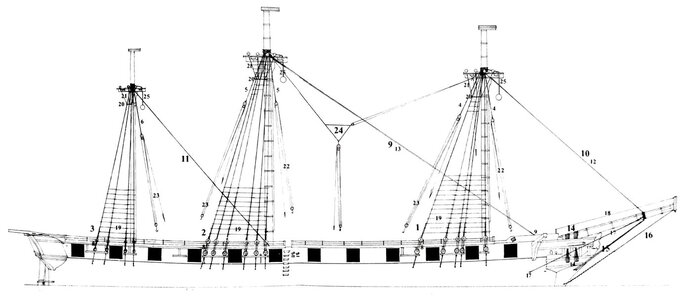
Source: Monograph La Creole by J. Boudriot pp. 125 and 126

Source: Monograph La Creole by J. Boudriot p. 101, photo detail of the original model
The execution of the garnet tackle documented in the Atlas du Génie maritime corresponds to the representation on the Paris model. Accordingly, I also do this on my La Créole model.
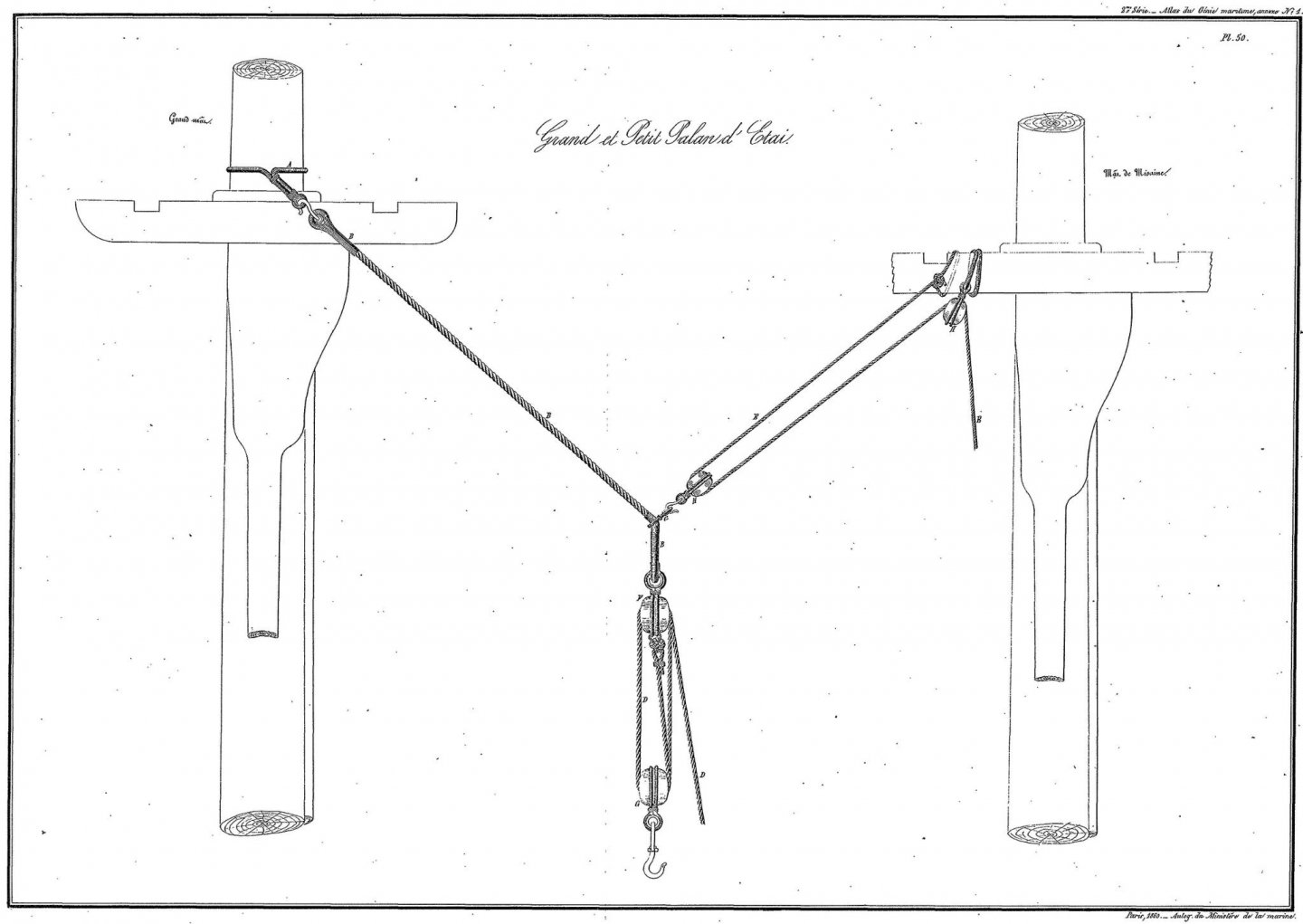
Source: Atlas du Génie maritime, annexe no.1, pl. 50
I was able to identify another garnet tackle on the photo of the original model. I will also represent this accordingly on my model.
I started the preparations for the appropriate arrangements of these rigging details with the production of the double and single blocks. A total of 6 double and 4 single blocks are to be produced. I determined the block size by scaling the drawings from the atlas in comparison with the block list from the monograph (dependency on the rope diameter), which ultimately fitted pretty well. Thus, the double blocks have a length of around 6.8 mm and the single blocks have a length of around 5.2 mm. The blocks were made in the manner that has meanwhile been tried and tested for me.
In this context I would like to emphasize that, from my point of view, it makes no sense to prepare the blocks in their entirety in advance. That would be several hundred blocks for this corvette. In the meantime I have laboriously learned that all these blocks have the most varied of sizes and shapes, depending on the purpose. There are also many differences in terms of their fittings and fastening. That's why I manufacture the blocks individually based on the respective detail section. Due to the complexity of rigging, any other approach does not seem expedient to me, unless one simplifies and differentiates less, which of course is at the expense of the level of detail. Ultimately, everyone has to decide for themselves.
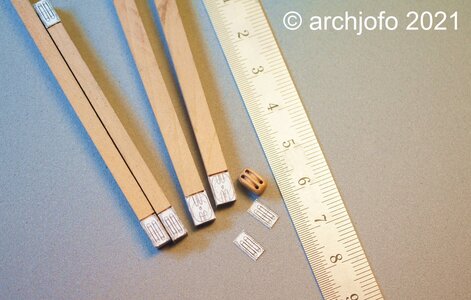
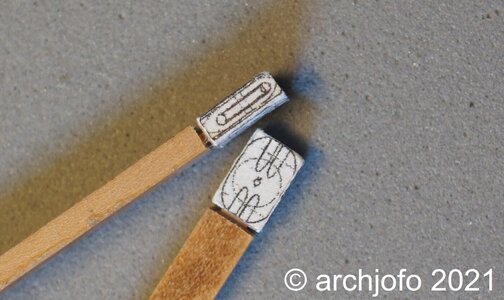
As can be seen on the following drawing from the Atlas du Génie maritime, the French used heavy garnet tackle blocks with so-called swivel hooks (croc à émerillon).

Source: Atlas du Génie maritime, annexe no.1, pl. 2
Below is a picture collage for making the swivel hooks.
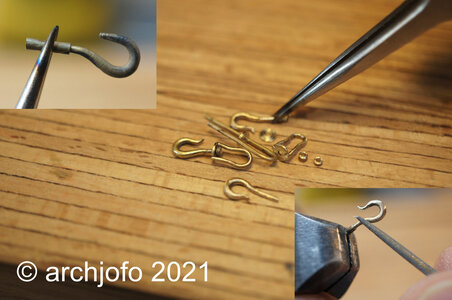
The majority of the required blocks, thimbles and hooks for the arrangements of the garnet tackle were made as far as can be seen in the next picture.

The manufactured brass parts are of course burnished to give them an iron-like appearance.
The next step is to make the garnet tackle. For this I still have to make the ropes in the appropriate strengths and serve. The necessary block strops must also be made.
Sequel follows …

